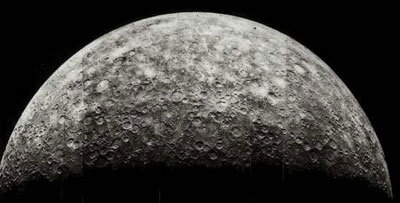Astronomers have an excellent habit of naming large projects after deserving contributors to their field. From Nancy Grace Roman to Edwin Hubble, some of the biggest missions are named after space exploration pioneers. When ESA and JAXA sat down to figure out a name for their new Mercury probe, they would have come across an important name early in their research – Giuseppe “Bepi” Colombo – the man who helped plan the Mariner 10 Mercury mission.
Giuseppe Colombo was an Italian rocket scientist born in 1920 in Padua. He studied Mathematics at the University of Pisa and eventually became a Professor of Applied Mechanics at the University of Padua after returning home.

Credit: Astrium
His first major contribution to space exploration was when he noted at a conference on Mariner 10 in 1955 that the spacecraft could make a second and even third pass by Mercury if the orbital mechanics were timed right. It would require a gravity assist from Venus, but given the probe’s orbital period was roughly twice the planet’s rotational period, it was possible to do so.
After a NASA study confirmed his mechanics, Mariner did, in fact, complete three flybys of Mercury, and one of Venus, with the closest coming in at a mere 327 km from the innermost planet. This was the first time a spacecraft used an interplanetary gravitational slingshot, a maneuver still commonly used by space probes today, including Colombo’s namesake. It also marked the most data ever gathered up close of Mercury – in fact, “almost everything known until now about the planet Mercury comes from Mariner 10’s orbits during 1974-75, which were inspired by Colombo’s calculations,” according to an ESA biography.

Credit – NASA
Calculations of Mercury’s orbital mechanics weren’t the only contribution Colombo made, though. He actively studied Saturn’s rings (eventually having a gap in them named after him) and developed a satellite tethering method that was eventually launched by the Space Shuttle as the Tethered Satellite System in 1992 and 1996. He also helped develop ESA’s mission to Halley’s Comet, known as Giotto.
Not content to deal with only theoretical matters, Colombo held numerous patents, including a preliminary one for a gravity gradiometer and a preliminary “skyhook.” On his literal deathbed, he was even thinking about ways that skyhooks could potentially generate electric power by moving through the Earth’s magnetosphere.

Credit – ESA
Unfortunately, he died of cancer in 1984 before many of his ideas could be implemented, including the tethering system or the mission to Halley’s Comet. But, he is remembered not only by the current mission, originally announced in 1999, that bears his name but also for ESA’s “Colombo fellowship,” which is granted every year to a European scientist specializing in astronautics. He is also the namesake of asteroid 10387.
From the accounts available in the record, including several obituaries still available around the internet, it seems Dr. Colombo would have been happy with his place in the pantheon of early space exploration pioneers. He certainly earned it.
Learn More:
ESA – Giuseppe ‘Bepi’ Colombo: Grandfather of the fly-by
Physics Today – Obituary
ESA – N° 40–1999: ESA’s Mercury mission named BepiColombo in honour of a space pioneer
Aerospace Guide – Giuseppe Colombo
Lead Image:
Image of Giuseppe “Bepi” Colombo
Credit – ESA


A 1955 conference for a flight to Mercury would have been well ahead of it’s time ! Actually “In 1955, he became Full Professor of Applied Mechanics at the Faculty of Engineering and in 1970 he was invited to NASA’s Jet Propulsion Laboratory (JPL) to participate in a conference on NASA’s Mariner 10 Venus/Mercury mission.”
Good catch! Thought the ’55 date had to be incorrect.
Rest of the article is great! I love stories of scientists who otherwise fall through the cracks of mainstream history.